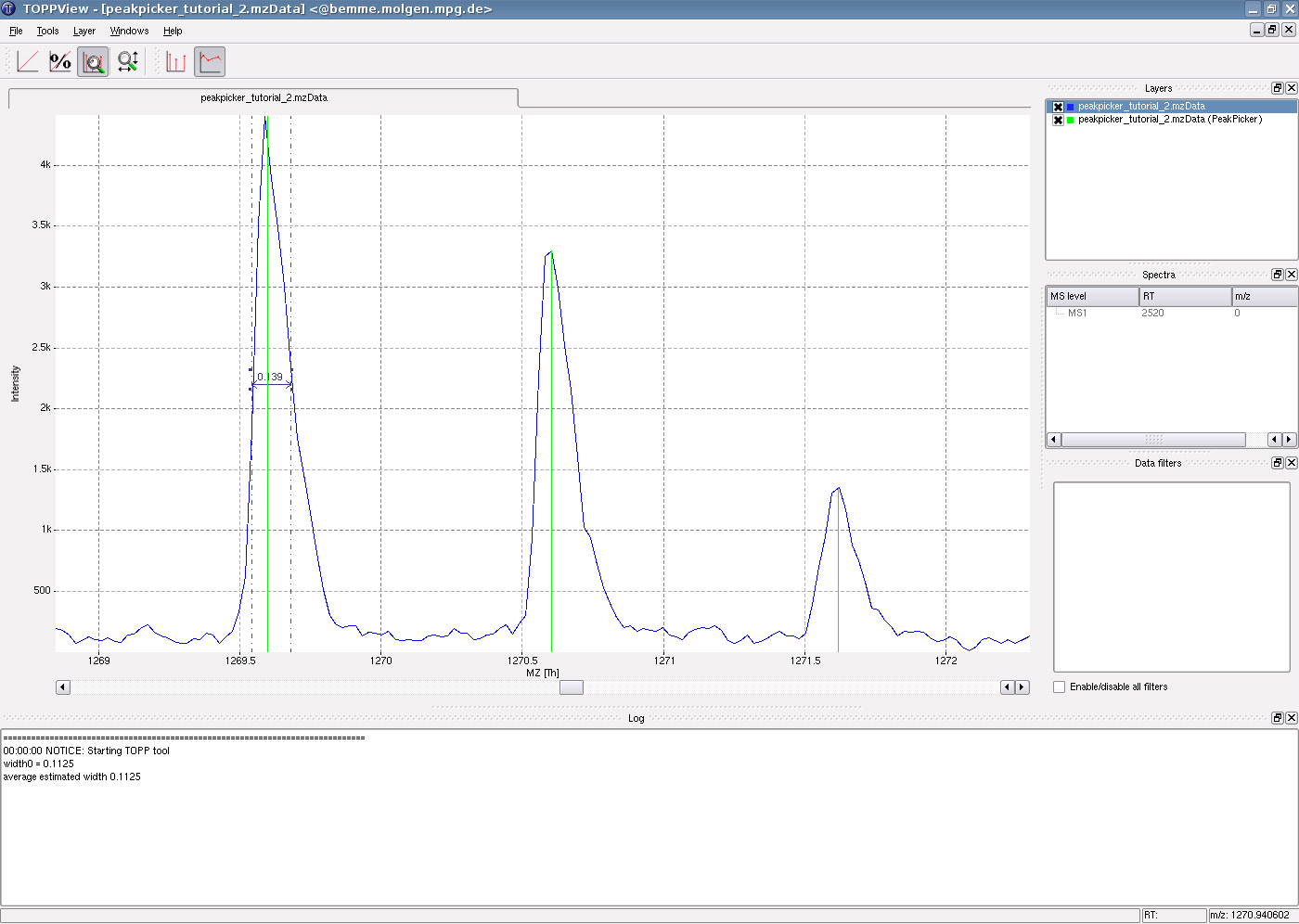 |
OpenMS
2.7.0
|
 |
OpenMS
2.7.0
|
If you have low resolution data you may consider to smooth your data first (Smoothing raw data) and subtract the baseline (Subtracting a baseline from a spectrum) before peak picking.
We have two types of PeakPickers, the PeakPickerWavelet and one especially suited for high resolution data (PeakPickerHiRes). In this tutorial we consider the PeakPickerWavelet. We use the file peakpicker_tutorial_2.mzML from the examples data (File > Open example data).
The main parameters are the peak width and the minimal signal to noise ratio for a peak to be picked. If you don't know the approximate fwhm of your peaks you can use the estimation included in the PeakPickerWavelet. Here you need to set the flag estimate_peak_width to true.After applying the PeakPickerWavelet you can see which peak width was estimated and used for peak picking in the log window.
If you want to estimate the peak width on your own, you may use the measuring tool (Basic use) to determine the fwhm of one or several representative peaks.
If the peak picker delivers only a few peaks even though the the peak_with and signal_to_noise parameters are set to good values, you may consider changing the advanced parameter fwhm_lower_bound_factor to a lower value. All peaks with a lower fwhm than fwhm_lower_bound_factor * peak_width are discarded.
The following image shows a part of the spectrum with the picked peaks shown in green, the estimated peak width in the log window and the measured peak width.

 1.9.1
1.9.1